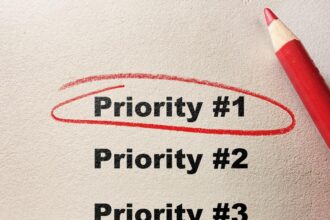The IRS has issued interim guidance for a new opportunity for taxpayers created under SECURE 2.0 that allows employers to make matching contributions to retirement plans based on employees’ student loan payments. The match amount is calculated as if the employee contributed their loan amount to the plan even if they did not make any elective contributions.
The reason for the legislation is simple: those repaying student loans may not be in a position to also stash funds away for retirement. That means that they’re not only missing out on retirement savings—but also the matching contribution. Under the new law, students can repay their student loans, and employers can treat those repayments as though they were retirement contributions for purposes of an employer match.
Background
SECURE 2.0 Act is a follow-up to 2019’s retirement-heavy legislation, the SECURE Act. President Biden signed the SECURE 2.0 Act into law on December 29, 2022, as part of the Consolidated Appropriations Act of 2023. SECURE 2.0 Act made several changes to existing law, including:
- Automatic Enrollment. Beginning in 2025, employers who start new retirement plans after December 29, 2022, will be required to automatically enroll eligible employees in their retirement plan—exceptions exist for small companies with ten or fewer employees, new companies, or church and government agencies. However, employees don’t have to participate and may opt out.
- Roth Account Matches. Employers can amend their existing plans to allow employees to receive vested matching contributions to Roth accounts—this is a change from when matching was only on a pre-tax basis.
- RMDs. SECURE 2.0 made several changes to RMDs (required minimum distributions). Some of the changes were confusing—and the IRS has been rolling out guidance. Last year, Notice 2022-53 noted that final RMD regulations will apply no earlier than the 2023 distribution calendar year. Notice 2023-54 added another year of relief by excusing 2023 missed RMDs for non-eligible designated beneficiaries of IRA owners who died in 2020 or 2021 after the required beginning date. And, not to be outdone, Notice 2024-35 added yet another year of relief (you can read more here).
- Qualified Charitable Distributions. Before the SECURE Act and SECURE 2.0, individuals aged 70½ or older could donate $100,000 annually to qualifying charities from their IRA—the contribution can count towards the taxpayer’s required RMD. As of 2023, that amount is indexed for inflation. Additionally, taxpayers who are 70½ or older can now make a one-time election of up to $50,000—indexed for inflation—from their IRA to a split-interest entity like a charitable remainder unitrust.
- 529 Plans. Beginning this year (2024), you can roll any unused 529 plan funds into a Roth IRA without a penalty. You can read more about that here.
- Student Loans. And, importantly, section 110 of the SECURE 2.0 Act allows employers to make matching contributions on account of employees’ qualified student loan payments (QSLPs) under section 401(k) plans, section 403(b) plans, SIMPLE IRA plans, and governmental section 457(b) plans.
Details
A QSLP is a payment made by an employee during a plan year to repay a qualified education loan incurred by the employee to pay qualified higher education expenses of the employee, the employee’s spouse, or the employee’s dependent.
The employee who makes a payment on the qualified education loan must have a legal obligation to make the payment under the terms of the loan. In general, a cosigner has a legal obligation to make payments under the terms of a loan, but unless the primary borrower defaults, a guarantor does not have a legal obligation to make payments. If an eligible employee may be a cosigner for the employee’s dependent, both the eligible employee and the dependent may have a legal obligation to make payments under the terms of the loan—but only the person who makes the payments can receive a QSLP match on account of those payments.
Section 221(d)(1) defines a qualified education loan as any indebtedness incurred by a taxpayer solely to pay qualified higher education expenses, subject to the conditions of section 221(d)(1)(A)-(C). Generally, this includes tuition and fees, books, supplies, and equipment, and other necessary costs such as transportation. Room and board may be included, but some restrictions apply.
The amount of student loan payments will be used to figure a QSLP match.
Limits
A QSLP match may apply to a 401(k) plan, a 403(b) plan, a SIMPLE IRA plan, or a governmental section 457(b) plan. The match amount for the year depends on the type of plan—the QSLP match must be based on the same formula used to match the employee salary deferral contribution. For purposes of annual limits, an employee’s student loan payments can be treated as QSLPs to the extent the total payments combined with the employee’s elective deferrals, if any, during a year don’t exceed the lesser of the annual limit on elective deferrals section 402(g) or the employee’s compensation.
Section 402(g) sets the annual deferral limit ($23,000 in 2024) for 401(k) plans, or similar plans maintained by non-profit and government employers—403(b) plans, most 457 plans and the federal government’s Thrift Savings Plan for workers—plus applicable catch-up contributions ($7,500 in 2024) allowed for employees ages 50 and older. For SIMPLE plans, the annual SIMPLE deferral limit is $16,000 in 2024, with an additional $3,500 catch-up for eligible employees, reduced by the employee’s contributions to the plan.
(You can read more about the retirement contribution limits for 2024 here.)
For purposes of figuring the amounts, only loan payments made during a plan year are eligible to be counted for purposes of the employee’s QSLP match for that plan year.
A plan may provide for QSLP matches to be contributed at a different frequency than elective deferral matches, provided that QSLP matches are made not less frequently than annually.
A QLSP match must be uniform across all employees. That means employees may not be excluded from QSLP matches on an individual employer, business unit, division, location, or other similar basis.
The non-discriminatory rules have not been forgotten. QSLPs can be treated as elective deferrals for purposes of the safe harbor plan rules. A QSLP match may be added as a mid-year change to a safe harbor plan, provided the notice and election opportunity conditions (found in Notice 2016-16) are satisfied. And, a mid-year change to a safe harbor plan to add a QSLP match feature will not be considered a prohibited mid-year change.
And, a QSLP match plan cannot include provisions that limit matches to certain qualified education loans, such as those for a particular degree program like a Bachelor of Arts, Juris Doctor (law school degree), or Master of Business Administration—or attendance at a specific school.
Certification
To qualify, an employee must certify to the employer that QSLPs have been made each year. To satisfy the certification requirement, the employee must provide the following:
- the amount of the loan payment;
- the date of the loan payment;
- confirmation that the employee made the payment;
- confirmation that the loan being repaid is a qualified education loan and was used to pay for qualified higher education expenses of the employee, the employee’s spouse, or the employee’s dependent; and
- confirmation that the employee incurred the loan.
This can be accomplished by an affirmative certification by the employee (alternative methods, like a loan registration, may also be suitable).
A plan may establish reasonable procedures that require independent verification that an employee has made payments during a plan year on a qualified education loan or passive certification by the employee. However, reasonableness is the name of the game—a plan may not establish independent verification or passive certification procedures that are not reasonably available with respect to a particular employee.
Quirks
There are some exceptions worth noting, mainly as they apply to SIMPLE IRA plans. For example, the QSLP match rules described in the IRS notice that relate to requirements that do not apply to SIMPLE IRA plans (for example, rules relating to the treatment of QSLP matches for purposes of nondiscrimination testing, including separate ADP testing) do not apply to a QSLP match feature in a SIMPLE IRA plan. In addition, an employee’s maximum QSLPs for a year with respect to a SIMPLE IRA plans are determined differently from other plans. An employee’s qualified education loan payments can be QSLPs in a SIMPLE IRA plan only to the extent such payments do not exceed the annual limit reduced by any other elective employer contributions the employee elected for the year.
Section 409A could complicate a nonqualified deferred compensation (NQDC) plan linked to a plan with a QSLP match. For purposes of election-timing and anti-acceleration rules, an employee’s action or inaction with respect to QSLPs will be treated as an action or inaction with respect to elective deferrals. The IRS anticipates issuing proposed regulations under section 409A that will conform.
Comments
Andy Banducci, Senior Vice President for Retirement and Compensation Policy at the ERISA Industry Committee (ERIC) said, in a statement, “ERIC’s member companies are committed to the financial wellbeing of their employees, including those with outstanding student loans. That is why we lobbied Congress to enact a tax law change allowing employers to make retirement plan matching contributions on account of workers’ qualified student loan payments. We applaud the IRS for issuing interim guidance implementing this change and look forward to providing technical comments to IRS in the coming weeks.”
ERIC is a national advocacy organization that exclusively represents large employers that provide health, retirement, paid leave, and other benefits to their nationwide workforces.
More Info
The notice applies to contributions made for plan years beginning after December 31, 2024—that means 2025 and beyond. (The law is effective for years after December 31, 2023.)
The IRS plans to issue proposed regulations providing further guidance, but plan sponsors may rely on the terms in the notice until then.
For more information, check out IRS Notice 2024-63.
The IRS welcomes public comment. In particular, it’s looking for feedback on:
- Whether additional guidance would be helpful relating to passive certification or independent verification;
- Whether, for a plan that provides for QSLP matches to be made more frequently than annually, guidance would be helpful in the case of an employee who receives a QSLP match early in a year before it is known whether subsequent elective deferrals will reduce the employee’s maximum QSLP for the year;
- Whether additional examples of reasonable procedures would be helpful with respect to QSLP matches;
- Whether additional guidance would be helpful concerning the application of the QSLP rules to SIMPLE IRA plans; and
- Whether additional guidance would be helpful concerning applying the QSLP rules to SIMPLE 401(k) plans.
Comments should be submitted in writing on or before 60 days after publication in the Federal Register. Comments submitted after that time will be considered if doing so will not delay the issuance of proposed regulations.
Comments may be submitted electronically via the Federal eRulemaking Portal at www.regulations.gov (type “IRS Notice 2024-63” in the search field on the Regulations.gov home page to find this notice and submit comments).
Alternatively, comments may be submitted by mail to: Internal Revenue Service, Attn: CC:PA:LPD:PR (Notice 2024-63), Room 5203, P.O. Box 7604, Ben Franklin Station, Washington, D.C. 20044.
Comments regarding the notice may be posted publicly.
(Author’s Note: Updated to include a statement from ERIC.)
Read the full article here










